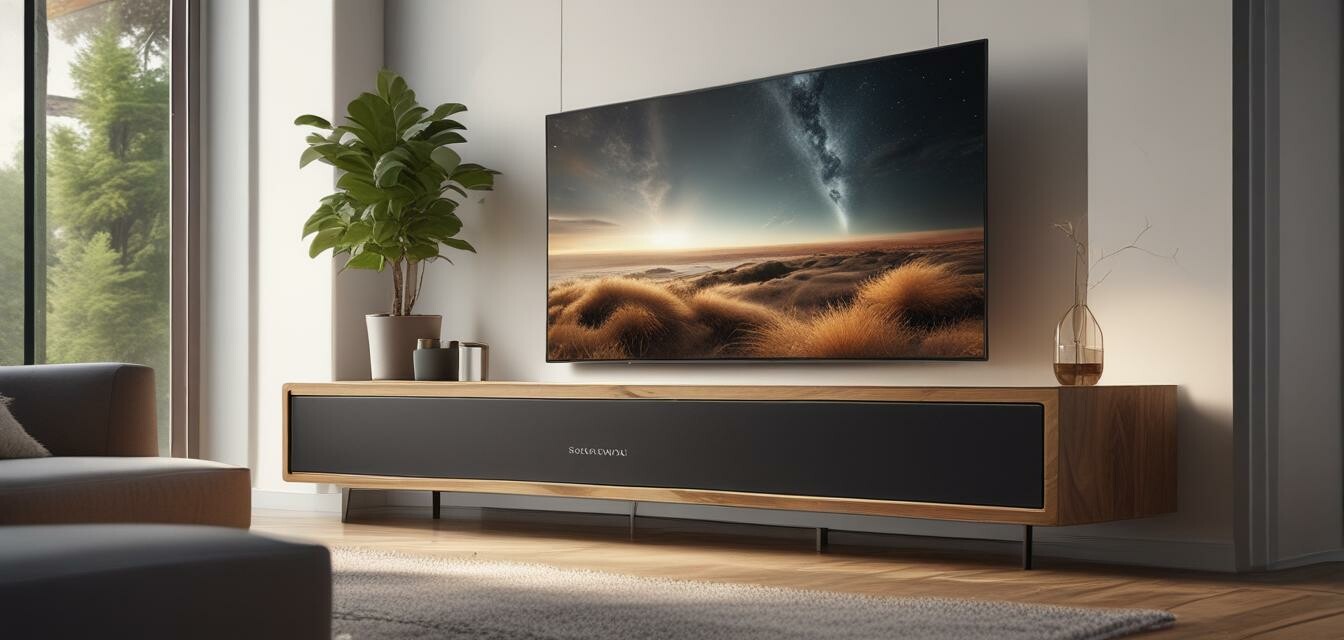
Eco-Friendly Soundbars: The New Normal?
- Eco-conscious brands are increasingly crafting sustainable soundbars.
- Materials used in manufacturing soundbars play a critical role in sustainability.
- The audio market is witnessing a shift towards greener practices.
- Consumers are demanding more environmentally friendly options.
- Emerging technologies are advancing eco-friendly audio without compromising quality.
In recent years, with growing environmental awareness, businesses in various industries have started adapting their practices for sustainability. The soundbar market is no exception. This article explores how eco-conscious brands are creating soundbars that not only deliver stellar audio performance but also adhere to sustainable practices.
The need for sustainability in audio technology
The soundbar market is expanding rapidly, with consumers looking for ways to enhance their audio experience. As this demand grows, so does the necessity for environmentally friendly practices in manufacturing and design. Sustainability in audio technology encompasses the use of renewable materials, energy-efficient production, and a commitment to reducing waste.
Eco-friendly materials used in soundbar manufacturing
Manufacturers are taking steps to reduce their environmental footprint by using sustainable materials in their soundbars. Here are some common materials being utilized:
| Material | Description |
|---|---|
| Bamboo | A renewable resource known for its strength and sound dampening properties. |
| Recycled plastics | Reduces plastic waste by reusing materials in soundbar construction. |
| Non-toxic finishes | Safe, eco-friendly finishes that minimize harmful emissions. |
| Cork | Great for sound absorption and is a renewable resource. |
Impact on the audio market
The push for sustainable soundbars is influencing various aspects of the audio market, including design, production, and consumer preferences. Here are some critical factors:
Consumer demand for sustainable options
Today’s consumers are more informed and increasingly prioritize sustainability when making purchasing decisions. Some notable trends include:
- Increased awareness: As environmental issues gain prominence, customers prefer products that align with their values.
- Brand loyalty: Brands that emphasize sustainability often enjoy a loyal customer base.
- Higher price tolerance: Consumers are willing to pay a premium for eco-friendly products.
Energy efficiency and eco-design
Soundbars that are energy-efficient not only reduce utility bills but also contribute to a lower carbon footprint. Features such as automatic standby modes and energy-efficient power supplies are becoming more common.
Innovative technologies in eco-friendly soundbars
Innovation plays a significant role in creating sustainable audio products. Key technologies are emerging in the market to support eco-friendly practices:
Wireless Sound Technology
Wireless sound technology eliminates the need for extensive wiring, reducing the use of materials and energy in production:
- Reduces e-waste
- Promotes easier recycling
- Enhances user convenience
Lifecycle assessment
Companies are increasingly conducting lifecycle assessments to understand their soundbars' environmental impact throughout the production process.
Challenges and future perspectives
While the trend for eco-friendly soundbars is on the rise, there are still challenges to be addressed, such as:
- Balancing cost and quality
- Meeting consumer performance expectations
- Educating consumers on the benefits of sustainable soundbars
Conclusion
The move towards eco-friendly soundbars is an exciting development in the audio technology sector. As eco-conscious brands continue to innovate, we can expect to see more sustainable options that do not compromise on performance. The audio market is embracing this transformation, paving the way for a greener future while ensuring that consumers can enjoy high-quality sound. For more insights on the latest trends in soundbars, check out our News and Trends section.
Pros
- Environmentally friendly materials and practices.
- Reduction in waste and energy consumption.
- Increased consumer awareness and demand for sustainability.
Cons
- Potential increase in production costs.
- Challenges in maintaining sound quality.
- Need for consumer education on the benefits of eco-friendly options.